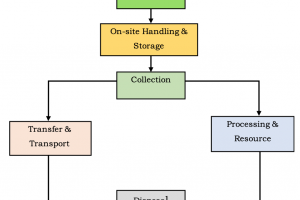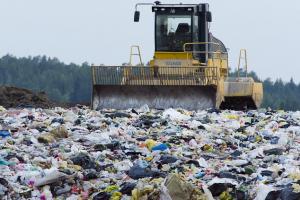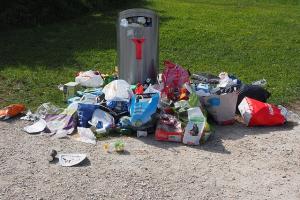Composting of Solid Waste, Objectives & Its Steps

Composting of Solid Waste:
- Composting of Solid Waste is defined as the "biological decomposition of biodegradable organic constituents of waste under controlled conditions to a state sufficiently stable for nuisance-free storage & handling and for safe use in land applications".
- About 70% of municipal solid waste is decomposable or compostable.
- The main organisms involved in composting are:
- actinomycetes (filamentous bacteria), fungi, and protozoa.
Objectives of Composting solid waste
- To transform biodegradable Organic matter into biologically stable material thereby reducing the original volume of the waste,
- To destroy pathogens, insect eggs, and other unwanted organisms and weed seeds that may be present in municipal solid waste.
- To retain maximum nutrient content; and
- To produce a product that can be used to support plant growth and as a soil amendment as fertilizer and soil conditioner.
Composting time depends on:
- The nature of waste.
- The moisture content of solid waste.
- Available nutrients in the solid wastes.
- Other environmental factors.
- Under controlled conditions, can be made more effective and efficient.
- Organic matter + O2 + nutrients + microbes ------- New cells + resistant OM + CO2 + H2O + NH3 + SO4 + heat.
- Reduces weight/volume of the organic fraction of MSW.
- Produces compost ( a humus-like material that can be used as a soil conditioner).
- To produce methane - Bio Gas.
Also See: Hospital Waste | Types of Hospital Waste
Steps in Composting solid waste:
PRE-PROCESSING
Receiving
- Sorting/separation: removal of recyclable material, metals, debris, glass etc. -affects the quality of
Size Reduction/Screening:
- to provide greater surface area for microbes to attack, to improve insulation, to facilitate homogenizing of initially heterogeneous material, and to reduce depth for oxygen diffusion.
- If the size is too small, it impedes the diffusion of oxygen and CO2 from the sites being attacked especially during the thermophilic stage when Oxygen demand is the highest.
- Typical range for feed material = ½ - 2 inches.
- Adjustment for waste properties (e.g C/N ratio)
- Decomposition and curing/maturation
Types are: Static piles and in-Vessel composting
- Preparation and marketing of the final compost product: Grinding, screening, air classification, blending with various additives, granulation, bagging, storage, and transportation
Windrow Composting
- Triangular piles 7 feet high and 14-16 feet wide at the base
- Turning by front-end loader or mechanical turner twice per week
- Composting period 2-6 weeks












